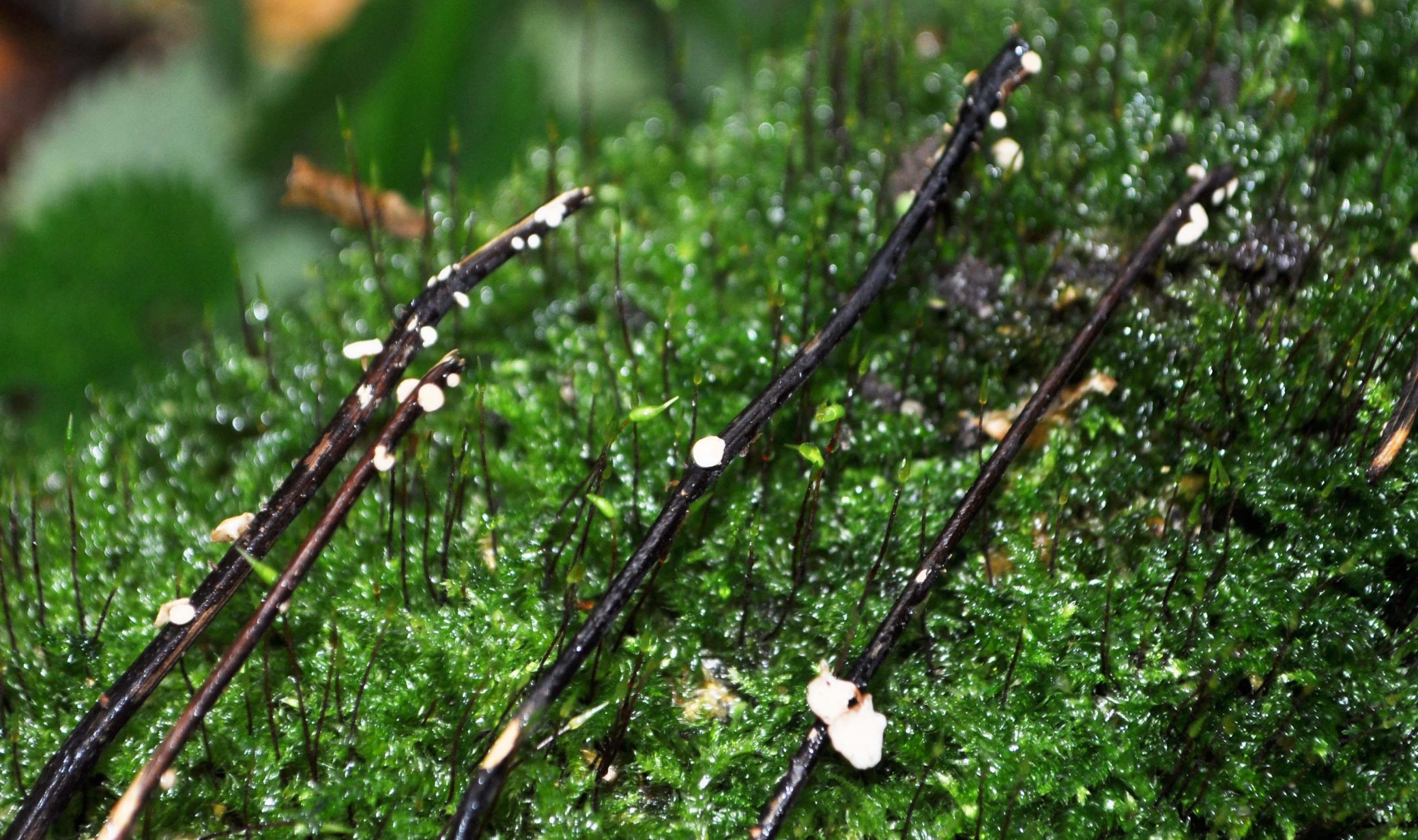
The tiny white Hymenoscyphus fraxineus fruiting bodies on the rachises (stalks) of the previous year’s fallen leaves from an infected ash tree. These mushroom-like fruiting bodies develop and burst open in summer, releasing thousands of spores into the air. The spores can be blown by the wind on to the leaves and bark of healthy ash trees, infecting them with Chalara ash dieback.
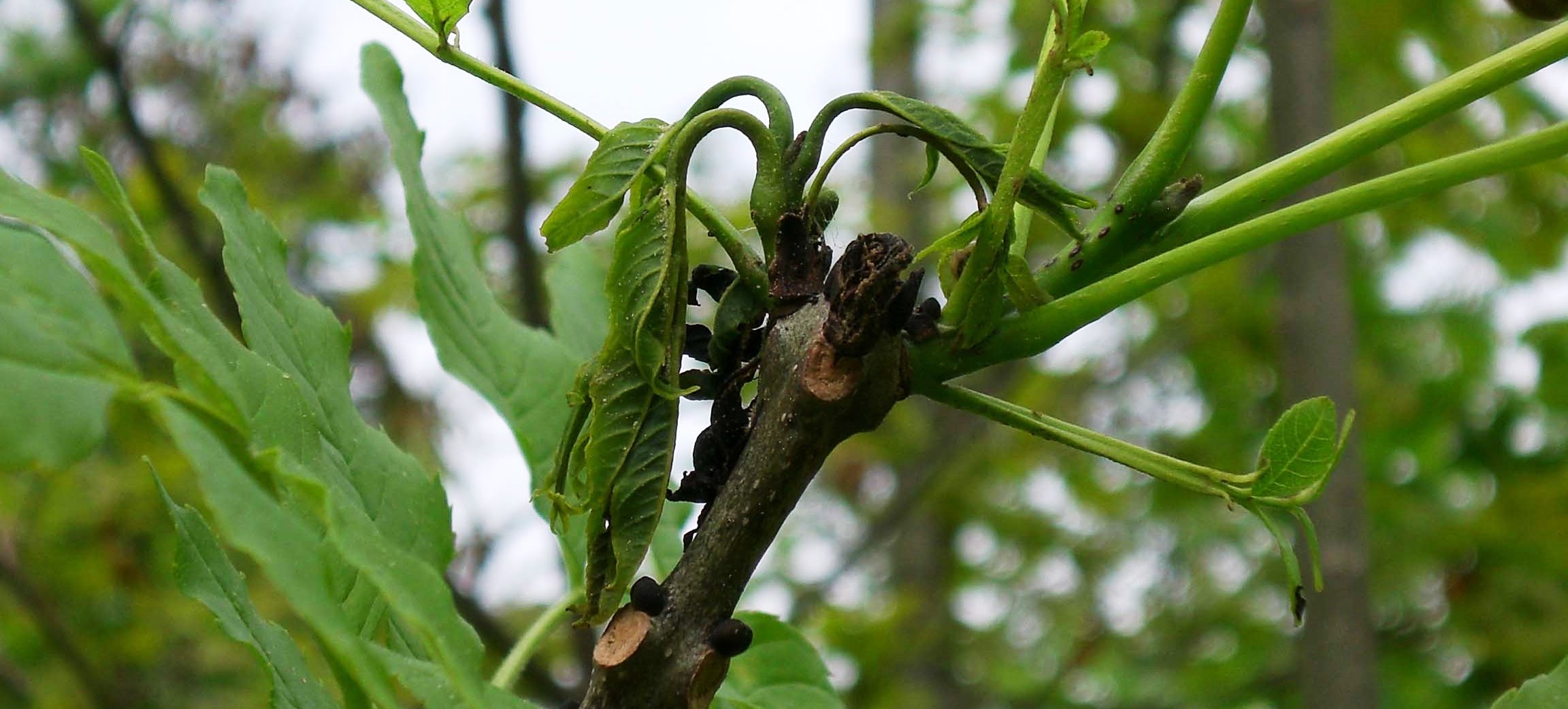
Blackened buds and wilting leaves of an ash tree in the early stages of Chalara ash dieback infection.
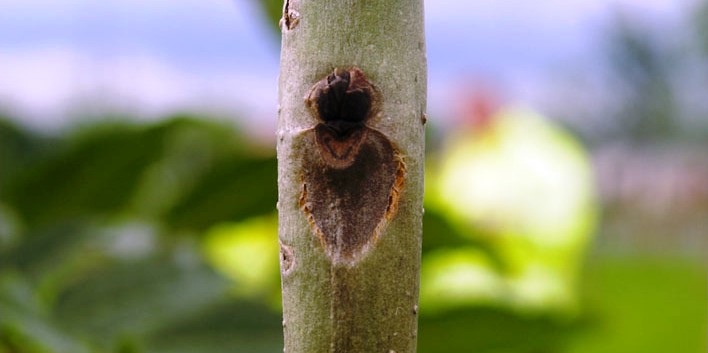
Chalara ash dieback lesion associated with leaf scar.
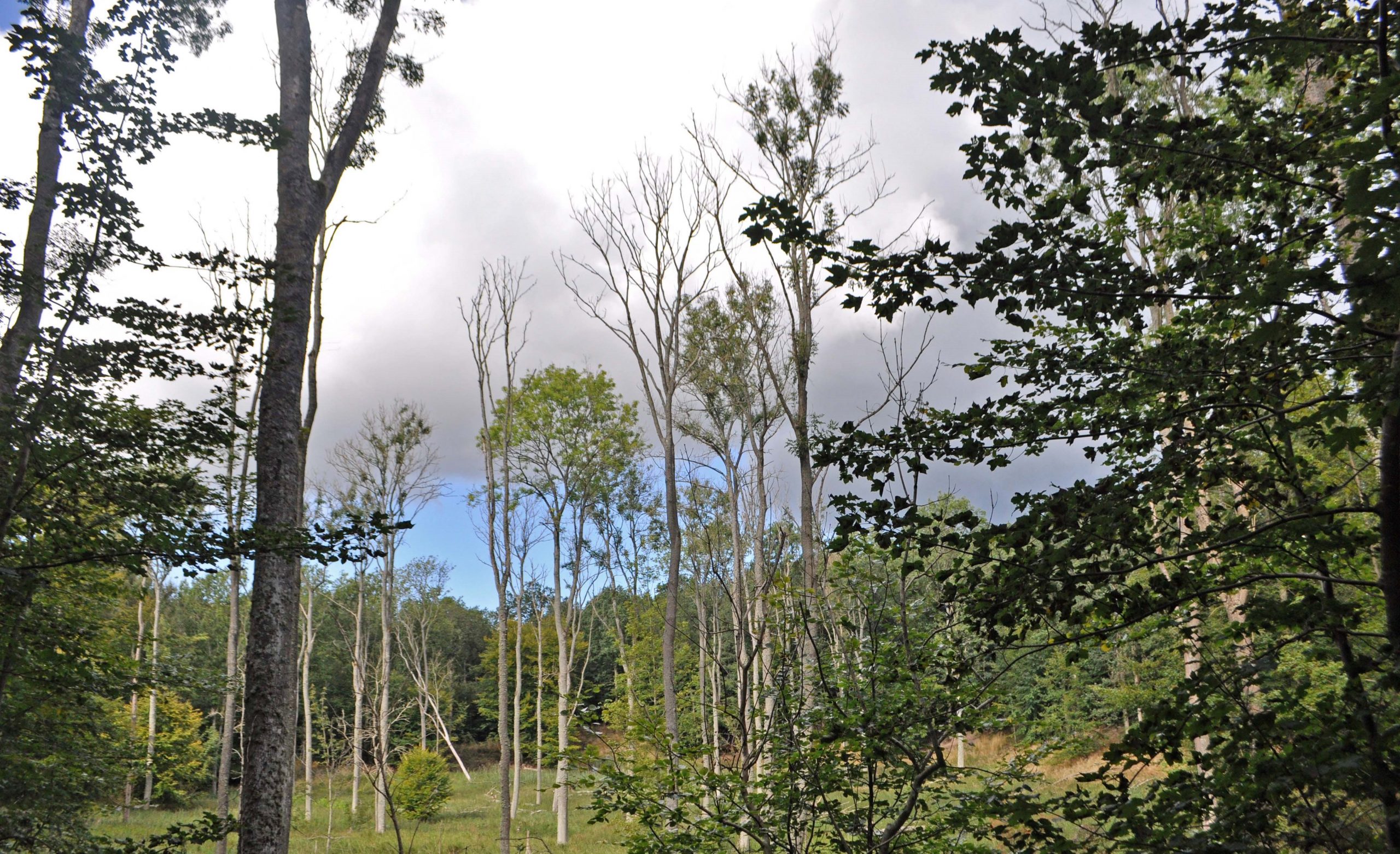
Mature ash trees in Denmark with Chalara ash dieback
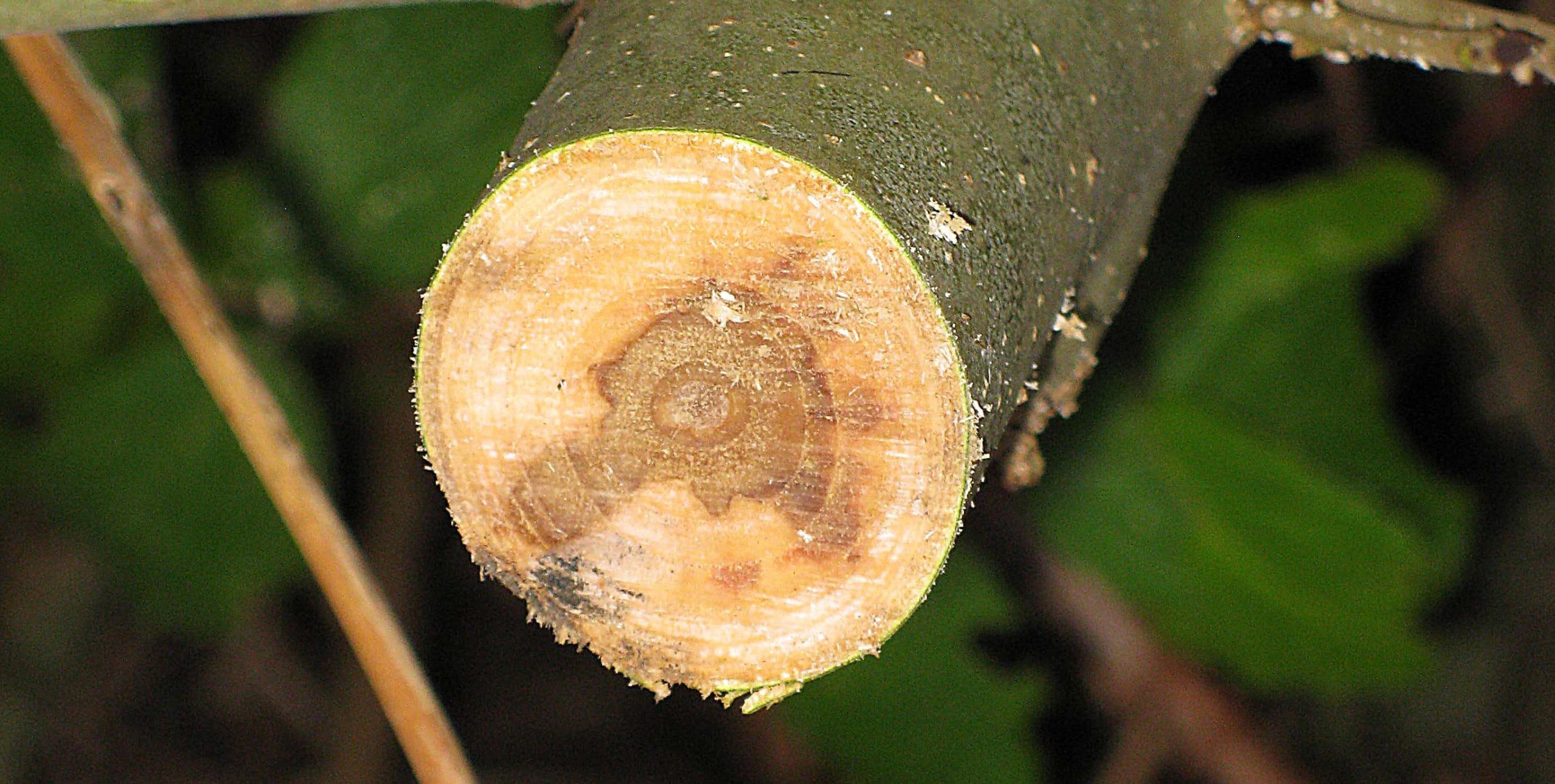
Brown staining of ash caused by Chalara ash dieback.
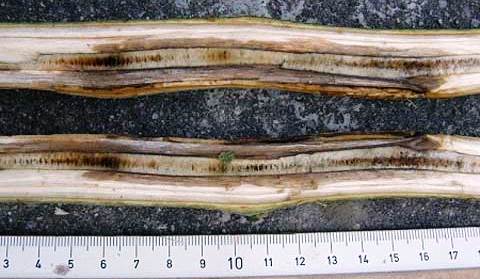
Another view of wood staining caused by Chalara ash dieback.
Unless otherwise stated, pictures belong to Forest Research or the Forestry Commission and are Crown copyright.